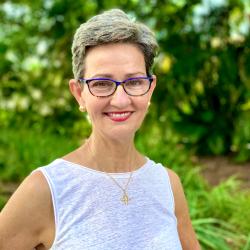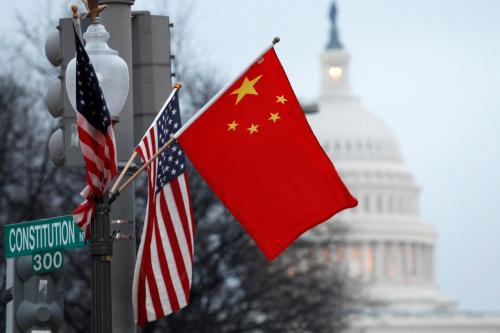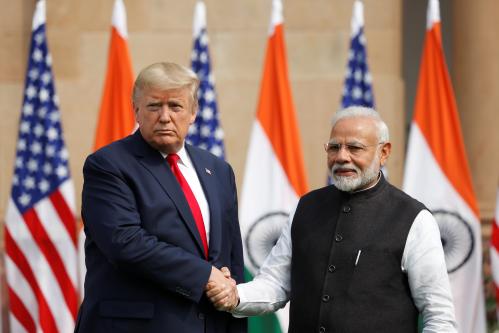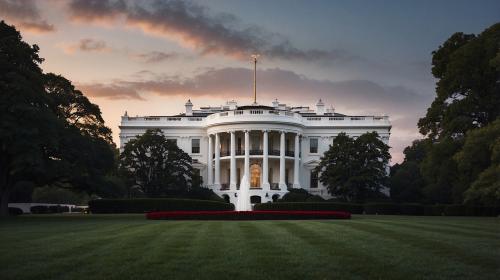Placemaking Postcards is a blog series from the Bass Center for Transformative Placemaking at Brookings where policymakers and practitioners guest-author promising placemaking efforts from across the U.S. and abroad that foster connected, vibrant, and inclusive communities. In line with the principle tenets of placemaking, the goal of the series is to recognize the community as the expert, highlight voices from the field, and to create a community of learning and practice around transformative placemaking.
Just a few years ago, no one would have called the vacant land underneath Miami’s elevated Metrorail particularly inviting, let alone transformative. But today, the city is reimagining this 10-mile corridor as a dynamic linear park: the Underline. The park will feature walking trails, biking infrastructure, and local art while also providing approximately 250,000 residents and 9 million transit users with free and contiguous high-speed internet.
While people often associate parks and other outdoor public spaces with escaping technology, the Underline is part of a growing movement to leverage “community-centered technology” to transform public spaces into more accessible, inclusive, and responsive community assets, as well as provide the vital public service of free high-speed internet and technical innovations for more residents. In a city like Miami, where over 30% of households lack internet access, the potential of utilizing public space to bridge the digital divide is especially ripe.
The Underline’s recent Phase 1 opening in the half-mile stretch known as “Brickell Backyard” offers important lessons on the role technology can play in transforming public spaces and encouraging more residents to take part in civic life.
Why embed technology in public spaces?
Public spaces have always served as hubs for gathering, forming bonds with neighbors, and forging attachments to place. At first, these critical functions don’t seem to align with the role of technology in today’s digitized society, which is often seen as a driving force of social division and loneliness. Increasingly, however, philanthropic and government institutions are recognizing the potential of embedding technology within public spaces—not only to increase residents’ access to technology, but also to bring more residents into public spaces, and therefore into the civic life of their neighborhoods and cities.
Philanthropic organizations like the Knight Foundation have been champions of using technology to connect people and places and pilot new innovations around civic engagement, climate, art, and more in public spaces. In 2019, the foundation provided the Underline with a $925,000 investment to create a technology master plan and hire a chief innovation officer and a chief operating officer. The public sector has also been a critical partner, with Miami-Dade County, the city of Miami, the state of Florida, the U.S. Department of Transportation, and others providing funding for the Underline for construction, park amenities, and features such as drinking fountains, bike repair stations, column signage, and Wi-Fi facilities.
Public and private sector actors cite the benefits of embedding technology in public space as a way to:
- Bridge the digital divide for nearby residents. The first benefit of embedding technology in public spaces is the most obvious: By installing free high-speed Wi-Fi within public community spaces, cities can increase access to the digital tools needed to succeed in school, work, and life. This is fundamentally an equity issue because in cities nationwide (including Miami), the digital divide disproportionately impacts Black and Latino or Hispanic households, as well as those with lower incomes and educational attainment. For as long as broadband internet subscriptions remain out-of-reach for large segments of the population, public spaces—including parks, libraries, and community centers—can act as a resource for residents to access the connectivity needed in today’s digitized world. Wi-Fi wasn’t originally planned for the Underline, but Friends of the Underline’s community outreach efforts revealed that to create multimodal corridors that truly connect people and places, they needed to look beyond the built environment. In a city with some of the highest digital access issues in the state, residents pushed us to transform the space into a new kind of civic commons that centers equitable access to technology as part of its core mission.
- Measure who is using the space to meet inclusivity goals. Public space investments often have explicit social cohesion goals of bringing diverse groups of residents together, providing community spaces for social gathering, and increasing residents’ attachment to place. But these aims can only be realized if all residents feel welcome and are physically able to access the space, and far too many public places fail to achieve cohesion and inclusion goals. For this reason, place management organizations nationwide have begun to use web-based tools to collect and store park utilization data (often drawn from observational and intercept surveys) and compare the demographics and ZIP codes of park users with the city as a whole. The Underline is also using technology to gauge the representativeness of its space—with particular attention to ZIP code data—to ensure residents from disinvested and under-resourced neighborhoods are accessing the park.
- Expand who can be engaged and provide feedback about the space. Robust and representative community engagement is a cornerstone of placemaking, but far too often when planning or designing public spaces, community members are engaged at the outset of the project yet have little follow-through or repeated engagement throughout. Technology can be a powerful tool to more regularly engage a broader swath of residents; for example, through free apps that allow them to provide feedback or through interactive data collection and mapping exercises. As such, the Underline is in the process of creating a digital forum for park users to provide feedback on the space in real time.
From physical to digital connectivity on the Underline
Achieving the city’s mission of transforming the Underline into a new kind of civic commons equipped with community-centered technology wasn’t easy. The Wi-Fi infrastructure has to withstand harsh weather conditions in the free-standing outdoor space, and our fiberoptics technology partner, Hotwire Communications, had to install multiple different access points across the 10-mile linear terrain. After two years of construction, we were able to configure the first phase of the park with 11 Wi-Fi access points designed to provide coverage for as many as 200 people per point.
The park’s first phase—a half-mile segment called “Brickell Backyard”—opened in February 2021, and has since hosted over 1 million visitors and more than 120 free community programs. Friends of the Underline has also identified additional ways to embed technology within the park, including a new educational mobile app, Dig & Learn (developed by Miami Dade College’s Miami Animation and Gaming International Complex), that engages visitors to learn about the area’s rich cultural diversity, history, and natural assets. We’ve also hired a chief innovation officer for the park to provide additional capacity for advancing our technology master plan, which outlines forward-looking goals for using technology for climate resilience, arts engagement, and other critical functions.
Miami’s journey to create a new public and virtual civic commons is just beginning. We anticipate adding more than 75 access points throughout the 10-mile outdoor space to provide ubiquitous high-speed internet access and reach many more residents and transit users. Despite initial hurdles, the Underline is proof that big ideas can be mobilized, funded, and implemented in a way that evokes positive transformation for both underutilized urban spaces and members of the surrounding community.
Photo credit: Sam Orberter 2022
The Brookings Institution is committed to quality, independence, and impact.
We are supported by a diverse array of funders. In line with our values and policies, each Brookings publication represents the sole views of its author(s).






Commentary
How Miami’s new linear park is using ‘community-centered technology’ to bridge the digital divide
August 30, 2022